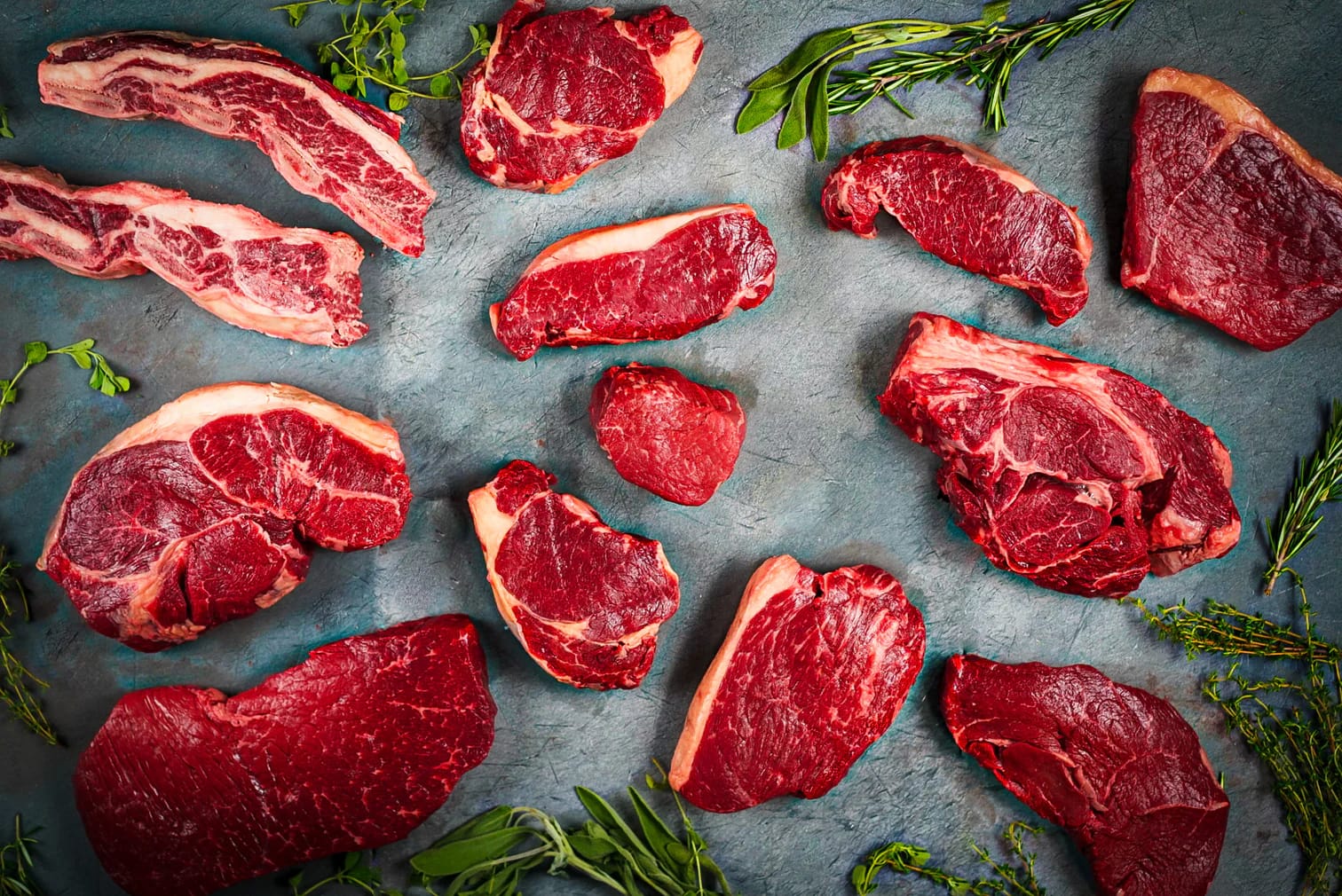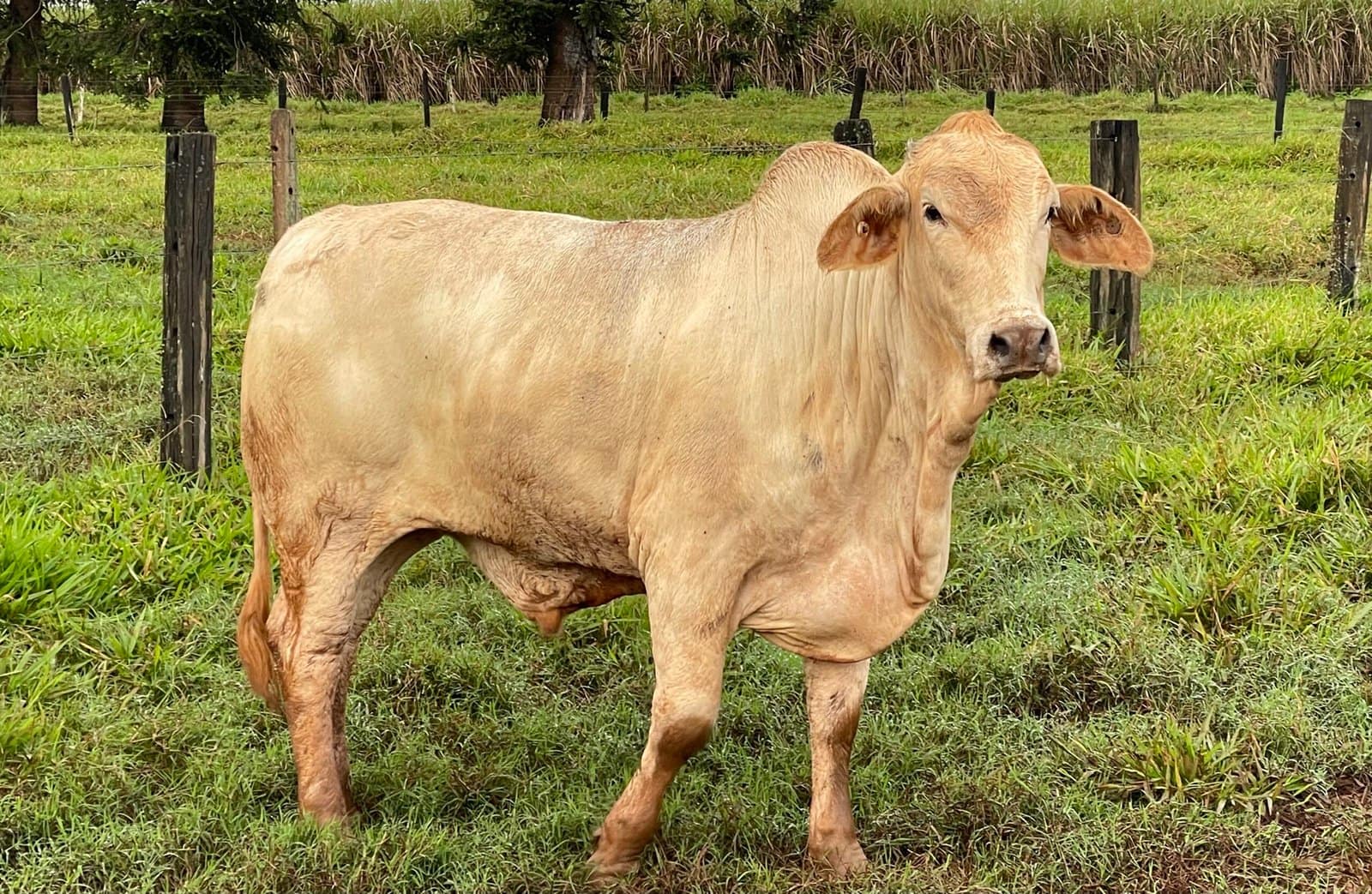KNOW YOUR MEAT
Beef Cuts Guide
When a beef carcass is butchered, it is separated into basic cuts, known as primal cuts. These cuts can be further divided into sub-cuts. It’s important to note that the term “primal” does not refer to the quality of the meat, unlike the term “prime,” which denotes higher-quality cuts. To learn more about the sub-cuts derived from each primal cut, click on the cut you choose below, find out how each cut is prepared, and explore some delicious recipes under the resources tab.
It is best viewed on a desktop computer or iPad.
Click on a cut for more information
Beef Meat
CHUCK
CHUCK
Comprising about 26% of the total usable meat per half animal, this large primal comes from the neck end of the steer down to the sixth rib (just past the shoulder). Full of connective tissue, a fair amount of fat, and collagen, cuts from this primal have lots of tough muscle fibres and rich flavour. Most of the meat from this primal is either ground for burgers or braised. A popular, if rare, exception is the flat iron steak, which is very tender.

CHUCK ROLL
The chuck roll is a cut of meat that is known for its high amounts of connective tissue. This makes it an ideal choice for slow cooking or braising. Additionally, it can also be thinly sliced and used for Korean-style grill cooking. Its high collagen content makes it a popular choice for both slow cooking and braising, as well as thinly sliced grill cooking.

CHUCK RIBS
This dish is an absolute crowd-pleaser, renowned for its exceptional richness and meatiness. It’s packed with bold and tantalizing flavours, and when slow-cooked, it turns out to be incredibly moist and tender. You won’t be disappointed with this delectable treat!

CHUCK STEAK
The Chuck Eye Roll is a cut often separated from the Under Blade section of the Chuck Roll. It can make delicious Chuck Eye roasts and steaks and be cut into boneless, country-style ribs. Chuck Eye Roll cuts offer a rich flavour and tenderness when prepared.

CHUCK EYE LOG
The Chuck Eye Roll is separated from the Under Blade section of the Chuck Roll. It can be cut into Chuck Eye Roasts, steaks, and boneless Country-Style Ribs. This cut possesses rich flavour and good tenderness.
CHEEK
CHEEK
The beef cheek muscle is very active in the animal’s everyday life, so preparing it to perfection can take some culinary expertise.

CHEEK
Consider beef cheek if you’re looking for a unique and tasty addition to your cooking. This thick muscle is prized for its tenderness and rich flavour. However, it requires slow cooking with moist heat to achieve a succulent texture.
BLADE
BLADE
Blade is a cut of meat that comes from the shoulder region of the animal and makes up approximately 6% of the carcass. It’s known for its delicious flavour and versatility in cooking, as it’s composed of multiple muscles with layers of fat and connective tissue. Blade is excellent for slow braising or roasting.

BOLAR BLADE ROAST

BLADE STEAK

OYSTER BLADE ROAST
The oyster blade is a delicious cut of meat found just below the shoulder blade. It is divided by a line of connective tissue. It can be prepared in various ways, such as roasting it whole, cutting it into steaks, or slicing and dicing it. If you remove the silver skin, you can even turn it into flat iron steaks that are flavorful, tender, and low in fat.

FLAT IRON STEAK
This particular cut of meat, known as oyster blade steak, is a fantastic choice for grilling due to its tenderness, marbling, and rich flavour. While some people may refer to Oster Blade steak as Flat Iron steak, true Flat Iron steak is prepared differently. The connective tissue and silver skin are removed from the oyster blade, resulting in lean, easy-to-use portions that are still incredibly tender, juicy, and flavorful.

OYSTER BLADE STEAK
The oyster blade is a steak cut from the shoulder blade and is known for being incredibly tender. When prepared for pan-frying or barbecuing, the steak should be separated from the shoulder and scored along the centre to prevent curling during cooking. The oyster blade is also an excellent choice for stir-frying, as it boasts a full flavour and tenderness.
SHIN
SHIN

SHIN BONE-IN/ OSSO BUCO

BONELESS SHIN
BRISKET
BRISKET

POINT END BRISKET

NAVEL END BRISKET
CUBE ROLL
CUBE ROLL

STANDING RIB ROAST

RIB CUTLET

SCOTCH FILLET STEAK

SCOTCH FILLET ROAST
SHORT RIBS
SHORT RIBS

SHORT RIBS
STRIPLOIN
STRIPLOIN

SIRLOIN STEAK

T-BONE
TENDERLOIN
TENDERLOIN

FILLET STEAK

BUTT FILLET
HANGER
HANGER

HANGER
SKIRT
SKIRT

SKIRT STEAK
FLANK
FLANK

FLANK STEAK
RUMP
RUMP

RUMP STEAK

RUMP ROAST

ROSTBIF

RUMP CAP

RUMP CENTRE STEAK

RUMP MEDALLION
KNUCKLE

EYE OF KNUCKLE
TOP SIDE
TOP SIDE

TOPSIDE ROAST

TOPSIDE STEAK
SILVER SIDE
SILVER SIDE

CORNED SILVERSIDE
OX TAIL
OX TAIL

OX TAIL
While many of us are familiar with the classic cuts of steak, the world of lesser-known cuts can be a fascinating and delicious adventure. From the trendy brisket to the growing demand for fattier steaks, there’s a whole new world of flavors to explore. As we become more adventurous in our cooking, it’s exciting to discover unique cuts that require specific cooking methods. Understanding the best ways to cook each cut can truly elevate the dining experience, enhancing both flavor and texture. In this guide, we’ll delve into the popular cuts and introduce you to some hidden gems, offering valuable tips on how to prepare, cook, and serve each one flawlessly.


